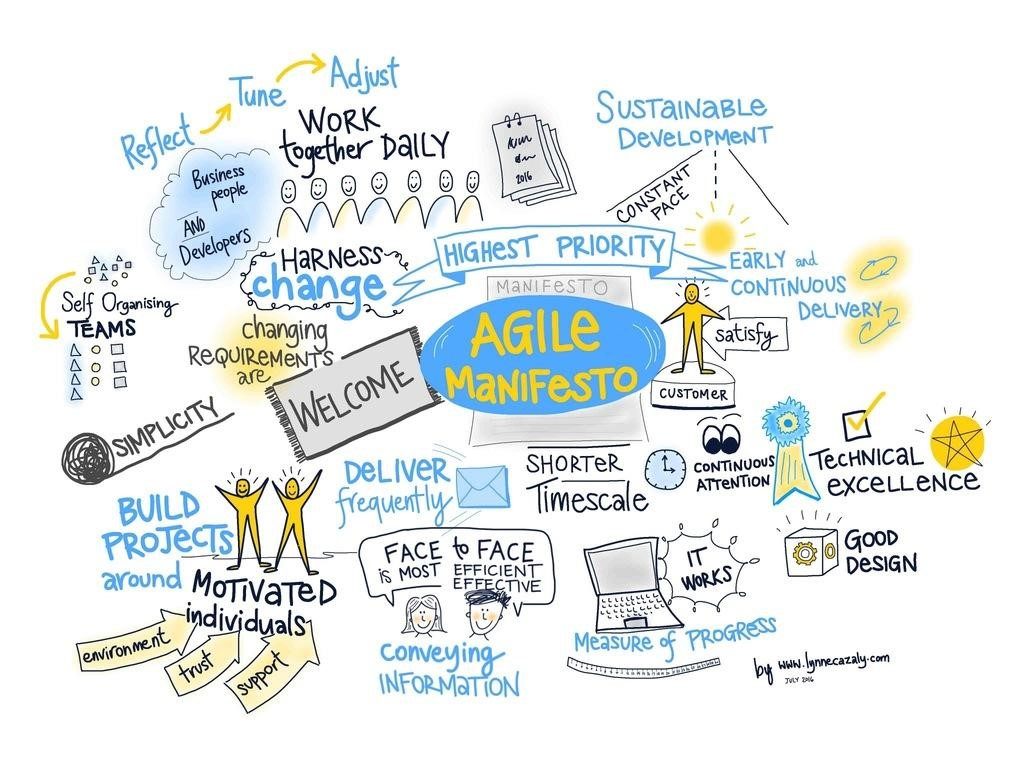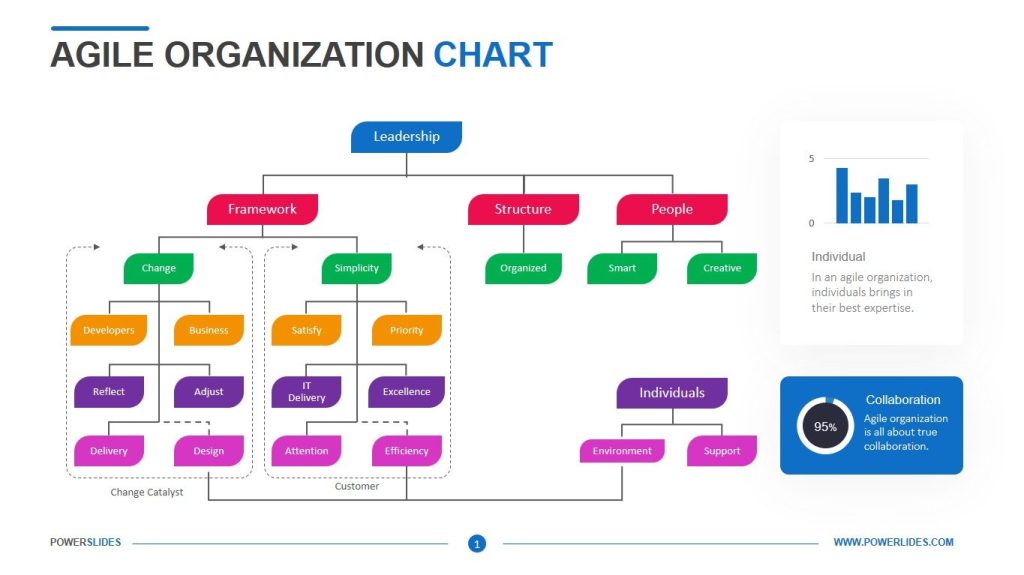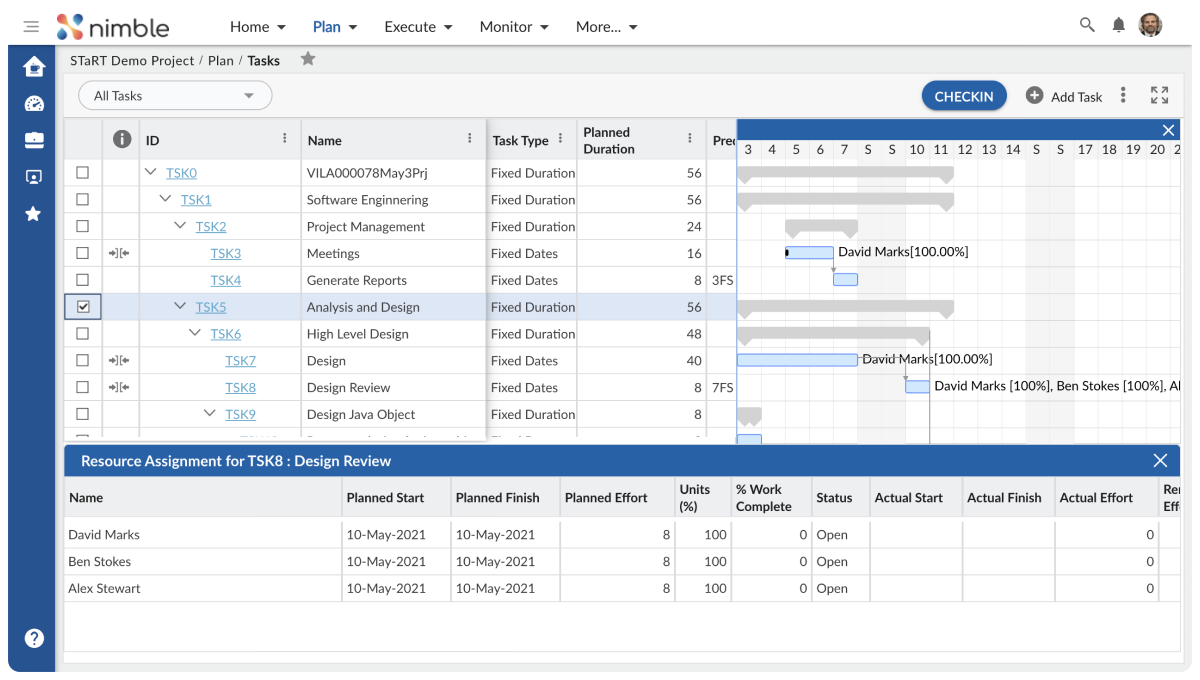The Agile project management methodology encourages organizations to empower teams with clear responsibility and authority, so they can work together to autonomously develop ingenious and innovative solutions. From the workforce perspective, this requires trust between team members, cross-functional teams, business executives and stakeholders. It also requires a structured mechanism for collaboration and information sharing, a guiding framework that maps interdependencies between individuals and teams, and the tools that can enable efficient collaboration.
Another important factor to the success of the Agile project management framework is the organizational culture, which guides team dynamics and collaboration, and also how things get done at the workplace. Consider culture as an informal, invisible but highly influential guiding operational framework at the organization. It sets the tone for your project workflows, team dynamics, operations and even the tools used to perform the jobs. Changing this tone is hard: according to McKinsey, 70 percent of change programs fail; for those successful, they must be truly invested in change for it to deliver effective results.

Much of the Agile mindset requires change from traditional ways of project management. This change has to cover factors relating to individuals; interpersonal factors between team members as well as executives affected by changing engineering processes and tools; and organizational factors that deal with the decision-making process, business operations, partnerships and investment decisions, among others.
These factors include the skills (and upskill) requirements on individuals, changing and dynamic roles and responsibilities among team members, levels of autonomy, control and empowerment available to individuals and teams. Interpersonal factors include the tools for managing operational workflows and communications, trust and leadership support, and dynamic cross-functional team contributions, among others. At the executive level, organizations need to streamline decision making, aligning operations and investments with Agile principles, promoting a culture of collaboration, learning and adaptability.
There’s a human element linked to all of them: individuals are influenced by their unique background, expertise and experiences; teams are highly influenced by the leadership and existing team dynamics; organizations are inherently influenced by tangible outcomes such as ROI and other business performance metrics.
So how do you navigate the human element in Agile transformation? Consider the following key guidelines:
Team Interdependencies and Collaboration
Complex interdependencies and hierarchical structures inhibit collaboration in teams where job responsibilities change dynamically. Traditional project management frameworks may encourage organizations to maintain isolated focus groups with dedicated responsibilities and expectations. Agile is different in the sense that responsibilities tend to overlap between team members. For example, the Agile Software Development Lifecycle (SDLC) framework assigns quality assurance responsibilities to developers so that software defects are identified earlier during the SDLC. In traditional SDLC frameworks such as Waterfall, quality assurance has been the responsibility of testing teams that evaluate software quality later in the SDLC pipeline; any defect identified at the later stage causes back-and-forth development cycles between Devs and QA teams. Both teams operate in silos, with isolated functional responsibilities and often conflicting goals – Devs want to ship new features faster while QA wants to guarantee robustness, security and quality of every feature release.
Truly Agile organizations break these cycles by enforcing clear and flat organizational structures based on value: in the Agile SDLC for instance, quality and security is an added responsibility of Devs, who must collaborate with QA and InfoSec teams during the development stages to ensure each feature build has quality and security capabilities embedded into the development process, instead of simply passing it off as a responsibility of the next team function in the SDLC pipeline.
That is not to say that Agile does not enforce clear and accountable roles. Agile breaks the silos, introduces a sense of responsibility and ownership as part of clear and accountable role instructions. This is achieved by replacing complex hierarchical team structures and isolated project functions with collaborative team efforts in a flat organizational structure.
Source: powerslides
Executive Support and Team Performance
From a leadership perspective, self organization and adaptability can be created by producing an ecosystem of active and meaningful partnerships, so that teams can access the best available resources, feedback, ideas, skills and talent when necessary. These partnerships are not limited to the internal workforce, but also include external vendors, partners, customers and users in the real-world. Executive sponsorship can take many forms: investments in innovative new projects that bring together cross-functional teams, open physical and virtual work environments that enable collaborative efforts, a mechanism for accountability and risk management while eliminating the blame-game that tends to inhibit change efforts and high-risk innovative ideas.
Agile project management supports the idea of self-organization, which means that team members may take on projects with different teams and business functions frequently. It is important to create robust knowledge communities where individuals can share their expertise and knowledge. This can be in the shape of a structured knowledge community and library, and policies that encourage employees to share their knowledge and expertise instead of producing knowledge silos. Leadership should also support open and collaborative culture, instead of breeding competition and office politics, as means to career progression.
Managers and teams should be rewarded for collaborative success, and any failure should be treated as a learning experience to improve future outcomes. Self-managing teams can choose their own operational workflows and are jointly accountable for their decisions. Team performance is not evaluated against static KPIs, such as velocity and cycle time, but meaningful metrics such as business value, team morale and customer satisfaction. Team leadership can also be dynamic: instead of assigning fixed leadership roles in small teams, they can choose leaders based on competence. A project owner can be focused on defining the project vision and goals. Individuals with their unique set of expertise are encouraged to take initiatives that help realize this vision.
Finally, the governance structure should encourage autonomy and self-management, by delegating governance closer to the hierarchical levels where decisions are made. For example, performance evaluation should be made at levels and forums that operate close to the teams and individuals in question, should have ample knowledge of the project, organizational circumstances, and expectations. This is different from traditional project management frameworks where senior executives tend to micromanage or are completely isolated from teams operating at a different hierarchical level.
Navigate the human element in Agile with Nimble Agile, our transformative approach to team dynamics and collaboration. Learn how to empower your teams and streamline decision-making processes for successful Agile transformations. Discover the keys to fostering a culture of collaboration, learning, and adaptability within your organization. Take the first step towards Agile excellence with Nimble Agile today! Signup for a FREE Trial.











